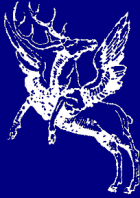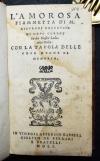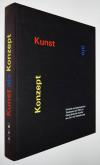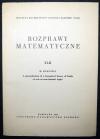Drogen
Die Liste enthält 3 Einträge. Suchergebnisse löschen und Gesamtbestand anzeigen.
| Abbildung |
Beschreibung Gesamte Buchaufnahme |
Preis EUR |
|
|---|---|---|---|
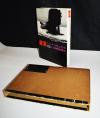 |
Kenmochi, Kazuo. Mayaku. Foto dkyumento. (Narcotics: Photographic Document). Tokyo, Inoue Shobo (1963). 4° (26,5 x 19,2 cm.). 157, (2) S. mit teils ganzs. Abb. OPbd. mit illustr. OU. in Orig.-Versandkarton.
Heiting/Kaneko 370, 280. Parr/Badger III, 82. – Erste Ausgabe der ersten Fotodokumentation zum Drogenkonsum in Japan. – 1972 und 1973 erschienen aktuallisierte Neuausgaben. – „One of the most remarkable aspects of Kazuo Kenmochi’: Narcotic Photographic Document is the date of publication 1963. The book came out at a time when the world at large was only gradually becoming aware of the problems of narcotics, and the issue was not yet the headine news that it would become only a few short years later. At that time, drugs were still something wayward that people such as jazz musicians did – that is, drug-taking was seen by the mainstream as being confined largely to the ‚other‘. Kenmochi blasts through all this and identifies drug addiction as a serious and growing problem in a classic of investigative photojournalism. The book Iooks at every aspect of drugs, from their production their distribution, the mechanics of the business and the reaction of the law. His photographs are accompanied by a comprehensive text that contains statistical diagrams and objective sociological analysis. The text is the sober part of the work, somewhat at odds with the best of Kenmochi’s photographs, which are both expressive and intimate, with something of conspiratorial air of Larry Clark“ (Parr/Badger). – Schutzumschlag am Kapital etwas berieben und mit kl. Löchlein am hinteren Gelenk, Deckelschild des Versandkartons etwas berieben, sehr gutes Exemplar. Schlagwörter: Drogen, Drugs, Japan, Photojournalism, Reportage-Photographie |
750,-- |  |
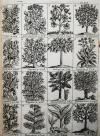 |
Lemery, (Nicolas). Dictionnaire universel des drogues simples. Contenant leurs noms, origine, choix, principes, vertus, étimologies, & ce qu’il y a de particulier dans les animaux, dans les végétaux, & dans les minéraux; ouvrage nécessaire à ceux qui ont la „Pharmacopée universelle“ du même auteur. Nouvelle édition. Paris, d’Houry 1760. 4°. [4] Bl., XXIV, 884 S. mit 400 Abb. auf 25 Holzschnitt-Tafeln. Ldr. mit goldgepr. Rückenschild und reicher Rückenvergoldung.
Hirsch/Hüb. III, 735. Ferguson II, 21. Poggendorff I, 1417. Wellcome III, 488. Vgl. Schelenz 488. Waller 5698. Nicht bei Lesky u. Osler. – Zuerst 1698 erschienenes pharmazeutisches Handbuch, welches zu den besten Heilmittel-Lexika des 18. Jahrhunderts zählt. 24 Tafeln zeigen jeweils 16 Pflanzen, die letzte Tafel zeigt 16 Tiere. – N. Lemery (1645-1715) „war der vorzüglichste Reformator der pharmaceutischen Chemie in Frankreich und hat sich dadurch ein besonderes Verdienst um diese Wissenschaft erworben, dass er überall Klarheit zu verbreiten suchte, die barbarische Sprache abschaffte, das Verfahren bei Bereitung der Arzneien auf das Sorgfältigste beschrieb u. nach den Begriffen seiner Zeit überall die Gründe des Verfahrens angab“ (Hirsch/Hüb.). – Rücken und Gelenke etwas berieben, durchgehend leicht gebräunt, gutes dekorativ gebundenes Exemplar. Schlagwörter: Arzneimittel, Arzneimittelverzeichnis, Botanik, Botany, Chemie, Drogen, Kräuterbücher, Zoologie, Zoology |
450,-- |  |
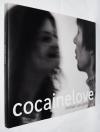 |
Graffenried, Michael v. Cocainelove. Wabern-Bern, Benteli 2005. Quer-Gr.-8°. 95 S. mit meist doppelblattgr. Duotone-Tafeln. OLn. mit illustr. OU.
Schweizer Fotobücher S. 485. – Erste Ausgabe. – „Während achtzehn Monaten hat Michael von Gaffenried das Drogenpaar Astrid und Peter mit seiner Kamera begleitet. Die Bilder zeigen einen schwierigen und unsicheren Alltag unter Drogen, zwischen Dealen, Gefängnis und Prostitution. Gleichzeitig verleihen die Bilder den beiden, welche die Gesellschaft als randständig ausgrenzt, ein Gesicht. Ein oft harter, manchmal zärtlicher, aber immer ehrlicher Blick“ (Klappentext). – Der Schweizer Bildjournalist M. v. Graffenried (geb. 1957) „hat nichts von der Direktheit oder der Unruhe Robert Franks und auch keinen neuen bahnbrechenden Stil, sondern schlicht ein gutes Auge (und damit eigentlich schon sehr viel). In einer Zeit, in der Unzufriedenheit bereits zu einer weit verbreiteten Haltung geworden ist, beherrscht er den schönen und zweckdienlichen Stil eines Reporters oder Straßenfotografen. Doch Form ist nicht der wesentliche Punkt; Inhalt ist alles. Er arbeitet schnell – mit einer 35-mm-Kamera – fotografiert sowohl in Farbe wie auch in Schwarzweiß (letzteres mit starken Kontrasten und einer gewissen Körnigkeit) und läuft angesichts der Widersprüche in der Welt zur Höchstform auf“ (V. Goldberg in Koetzle S. 176). – Tadellos. Schlagwörter: Drogen, Drogenabhängigkeit, Sozialdokumentarische Fotografie |
100,-- |  |
|
Einträge 1–3 von 3
Zurück · Vor
|
|||
| Seite: 1 |

